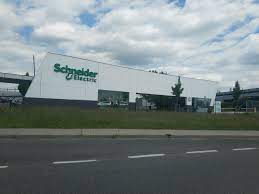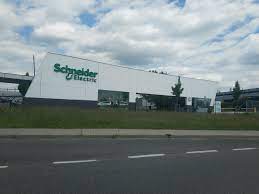
In this post, we'll guide you through the journey every Schneider Electric product undergoes and the role Eco-Design plays in shaping it.
What Eco-Design Signifies for Us
Schneider Electric's commitment to climate action is grounded in a genuine aspiration for change, with our approach guided by education, empowerment, and insight. Several principles integral to Eco-Design have influenced our practices for many years, with a focus on energy efficiency and durable product life cycles ingrained in our design and manufacturing processes. Currently, the integration of Eco-Design is being expanded across all facets of Schneider Electric on a larger scale.
Embracing Sustainability
Presently, 80% of our products align with the criteria set by our Green Premium label—a standard introduced in 2008 to communicate which products best support sustainability goals for homeowners, building managers, architects, distributors, or original equipment manufacturers. As the understanding of sustainability importance has grown and requirements evolved, our Green Premium range has adapted while upholding its core values of trust, transparency, and performance:
What Eco-Design Signifies for Us
Schneider Electric's commitment to climate action is grounded in a genuine aspiration for change, with our approach guided by education, empowerment, and insight. Several principles integral to Eco-Design have influenced our practices for many years, with a focus on energy efficiency and durable product life cycles ingrained in our design and manufacturing processes. Currently, the integration of Eco-Design is being expanded across all facets of Schneider Electric on a larger scale.
Embracing Sustainability
Presently, 80% of our products align with the criteria set by our Green Premium label—a standard introduced in 2008 to communicate which products best support sustainability goals for homeowners, building managers, architects, distributors, or original equipment manufacturers. As the understanding of sustainability importance has grown and requirements evolved, our Green Premium range has adapted while upholding its core values of trust, transparency, and performance:
- Trust: Customers trust us to minimize hazardous substances in compliance with and exceeding regulatory levels.
- Transparency: We remain clear and open about environmental disclosures and end-of-life instructions.
- Performance:Environmental performance is prioritized in our product development.
Illustrations in Eco-Design
Let's examine how Eco-Design, coupled with our dedication to the Green Premium range, has influenced the development of our products. Acti9 Active, for instance, is an all-in-one protection device that integrates an Arc Fault Detection Device, Residual Current Device, Miniature Circuit Breaker, and inbuilt connectivity. This multipurpose design not only reduces manufacturing and packaging materials but also cuts emissions related to transport. It delivers a cutting-edge product to customers without compromising on performance.
Deconstructed, our packaging incorporates a minimum of 70% recycled content, derived from at least 56% post-consumer recycled plastic. This effort has yielded a 14% reduction in CO2 equivalent emissions during product manufacturing.
Eco-Design and Net-Zero Objectives
Eco-Design plays a pivotal role in advancing our goals and environmental commitments, essential for meeting the escalating expectations of customers, partners, and regulators. Our Science Based Targets initiative (SBTi)-validated Net-Zero targets encompass:
Achieving carbon-neutral operations by 2025
Attaining a 25% absolute carbon reduction throughout our value chain by 2030, with operational readiness for Net-Zero
Establishing an end-to-end carbon-neutral value chain by 2040
Achieving Net-Zero CO2 emissions across our entire value chain by 2050
These ambitious targets underscore our commitment to reducing environmental impact while delivering top-tier service and products.
Eco-Design as a Key Enabler
Eco-Design will be instrumental in realizing these objectives, encompassing everything from optimizing materials for product packaging to environmentally-conscious product transportation practices.
Fostering Understanding of Eco-Design
For our Eco-Design principles to truly make an impact, comprehension on both intellectual and emotional levels is crucial among the teams responsible for implementation. To promote awareness and integration of Eco-Design into our broader sustainability strategy, we are dedicated to providing accessible education and transparent communication. The upcoming Eco-Design Training Path campaign aims to:
Let's examine how Eco-Design, coupled with our dedication to the Green Premium range, has influenced the development of our products. Acti9 Active, for instance, is an all-in-one protection device that integrates an Arc Fault Detection Device, Residual Current Device, Miniature Circuit Breaker, and inbuilt connectivity. This multipurpose design not only reduces manufacturing and packaging materials but also cuts emissions related to transport. It delivers a cutting-edge product to customers without compromising on performance.
Deconstructed, our packaging incorporates a minimum of 70% recycled content, derived from at least 56% post-consumer recycled plastic. This effort has yielded a 14% reduction in CO2 equivalent emissions during product manufacturing.
Eco-Design and Net-Zero Objectives
Eco-Design plays a pivotal role in advancing our goals and environmental commitments, essential for meeting the escalating expectations of customers, partners, and regulators. Our Science Based Targets initiative (SBTi)-validated Net-Zero targets encompass:
Achieving carbon-neutral operations by 2025
Attaining a 25% absolute carbon reduction throughout our value chain by 2030, with operational readiness for Net-Zero
Establishing an end-to-end carbon-neutral value chain by 2040
Achieving Net-Zero CO2 emissions across our entire value chain by 2050
These ambitious targets underscore our commitment to reducing environmental impact while delivering top-tier service and products.
Eco-Design as a Key Enabler
Eco-Design will be instrumental in realizing these objectives, encompassing everything from optimizing materials for product packaging to environmentally-conscious product transportation practices.
Fostering Understanding of Eco-Design
For our Eco-Design principles to truly make an impact, comprehension on both intellectual and emotional levels is crucial among the teams responsible for implementation. To promote awareness and integration of Eco-Design into our broader sustainability strategy, we are dedicated to providing accessible education and transparent communication. The upcoming Eco-Design Training Path campaign aims to:
- Emphasize Eco-Design as a leadership priority: Clarify expectations on Eco-Design performance and its role in future processes
- Equip teams with a foundational understanding of key Eco-Design principles: The Eco-Design Training Path will be structured into various levels, catering to diverse roles, departments, and audiences, ensuring relevance and applicability to each.
Moving ahead, we have made significant progress in embedding an Eco-Design philosophy throughout Schneider Electric, recognizing that this is an ongoing evolutionary process.
Our efforts encompass various aspects, ranging from the education and training of our personnel to a thorough examination of our global product transportation methods. Throughout these initiatives, we consistently adhere to the fundamental principle of Eco-Design: when making design choices, our goal is to opt for the environmentally least harmful choices feasible with the technologies and innovations at our disposal.
To know more click here.


 Advancing Eco-Design: Schneider Electric's Ongoing Evolution Towards Sustainable Choices
Advancing Eco-Design: Schneider Electric's Ongoing Evolution Towards Sustainable Choices




 Companies
Companies